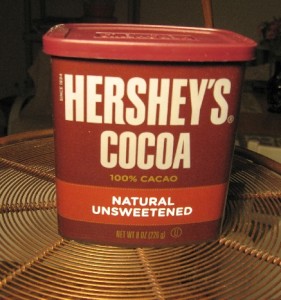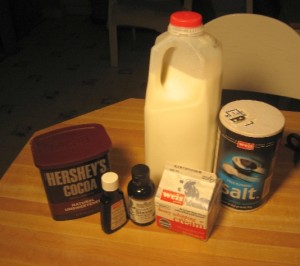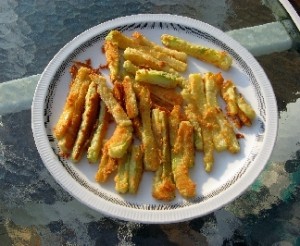 I consider zucchini to be the “Swiss Army Knife” of summer vegetables since there are so many different ways to prepare it – both as a main course as well as a side dish. Though fresh zucchinis can be had year round in most locales, it’s at its best during the summer months. I’m a big believer in the strategy of consuming fruits and vegetables when they’re in season. Zucchini also are easy to grow in backyard gardens provided you have sufficient space to let the vines roam. The following recipe is just one of many ways to prepare a healthy and tasty side dish using zucchini.
I consider zucchini to be the “Swiss Army Knife” of summer vegetables since there are so many different ways to prepare it – both as a main course as well as a side dish. Though fresh zucchinis can be had year round in most locales, it’s at its best during the summer months. I’m a big believer in the strategy of consuming fruits and vegetables when they’re in season. Zucchini also are easy to grow in backyard gardens provided you have sufficient space to let the vines roam. The following recipe is just one of many ways to prepare a healthy and tasty side dish using zucchini.
Though this recipe won’t make you forget McDonald’s fries, it will hopefully begin to gently lead you towards a path of choosing healthier and lower carb side dishes. There are quite a few recipes out there for zucchini fries, but I’ve found them to still be a little too heavy on the starchy carbs for my liking. Most use flour and breadcrumbs to provide a crispy coating to the fries. This is great, but through a little experimenting, I’ve managed to come up with something just as good that doesn’t add to the glycemic load of the recipe and is also much simpler to prepare since it eliminates a few extra steps. The other recipes require that you first dredge the zucchini strips in flour and then dunk them into egg before another dredging operation into breadcrumbs. We’re gonna skip all that and get right into cooking up some zucchini fries!
It’s Officially Zucchini Season 2015!
With zucchini’s popping out in gardens all over now that it’s summer, why not take advantage of all the great ways to enjoy them? Besides this fantastic low-carb baked zucchini fries recipe, there’s also zoodles. In the video below, I demonstrate how to use a simple Vegetti slicer to make oodles of zoodles! It also includes a delicious recipe for combining them with a low-carb version of Chicken Parmesan.
Servings: 2

Ingredients:
- 1 medium size zucchini
- ½ C Parmesan cheese
- 3 Tbsp Extra virgin olive oil
- ½ tsp Salt
- ½ tsp Ground pepper
Directions:
- Preheat oven to 350F
- Peel the zucchini with a potato peeler and cut into strips ¼” thick and about 3” long
- Pour 2 Tbsp of olive oil into a glass baking dish and dump the “fries” into it. Lightly toss the fries until well-coated with olive oil.

- Dump Parmesan cheese, salt, and pepper onto a plate and sift together using a fork.
- Place several fries at a time into the Parmesan cheese mixture. Roll the zucchini strips over several times in the mixture making sure that they are thoroughly coated on both sides with cheese.
- Place the zucchini strips in uniform rows on the cookie sheet. You don’t need much spacing between them, but you may need a second cookie sheet depending on how many fries you wound up with.

- Sprinkle the remaining olive oil using a metal soup spoon evenly over the tops of the fries.
- Bake the fries for 10 minutes and then remove from the oven. Carefully flip them over using a spatula and then place back into the oven for another 10 minutes or until well-browned.
- Remove fries from oven and server immediately – either as a side dish or as an appetizer with one of the aforementioned dipping sauces.
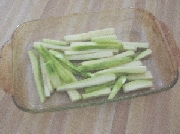
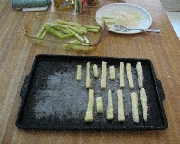
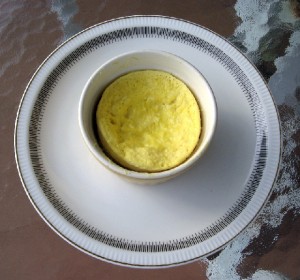 In the lowcarber’s on-going quest to find low-carb versions of traditional dishes from the high-carb world, there exist the ones from the pastry world. I won’t bother to enumerate any of them here. The list is legion and I’m sure you just rattled off at least a dozen in your head while reading the previous sentences. It’s a world you’re better off leaving completely behind. But if you insist on going there, then you need to be aware of the preparation challenges with adapting these temptations to your way of eating.
In the lowcarber’s on-going quest to find low-carb versions of traditional dishes from the high-carb world, there exist the ones from the pastry world. I won’t bother to enumerate any of them here. The list is legion and I’m sure you just rattled off at least a dozen in your head while reading the previous sentences. It’s a world you’re better off leaving completely behind. But if you insist on going there, then you need to be aware of the preparation challenges with adapting these temptations to your way of eating.
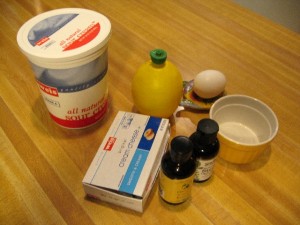
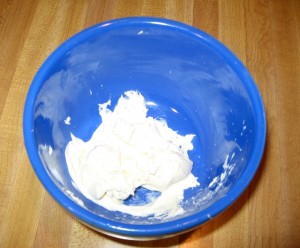
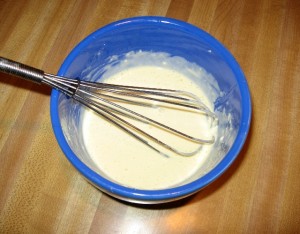
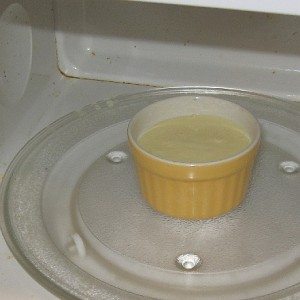
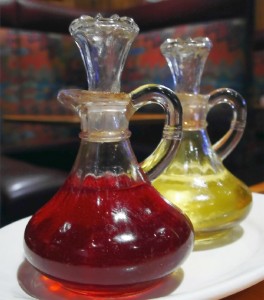 A staple of any diet, low carb or otherwise, is salads. Sometimes you do find yourself feeling like that proverbial rabbit from noshing on all that lettuce and the only saving grace is all the salad dressing you can drench it in to mask the fact that you’re essentially eating roughage.
A staple of any diet, low carb or otherwise, is salads. Sometimes you do find yourself feeling like that proverbial rabbit from noshing on all that lettuce and the only saving grace is all the salad dressing you can drench it in to mask the fact that you’re essentially eating roughage.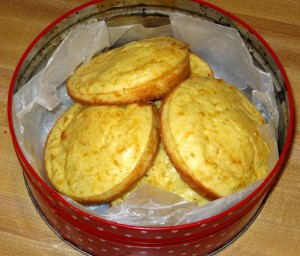 One of the first things that gets thrown out when starting to eat low carb is bread—bread of all kinds: sliced bread, dinner rolls, sub rolls (hoagie rolls in Philly), Kaiser rolls, English muffins, and biscuits (oh, no, not the biscuits!)
One of the first things that gets thrown out when starting to eat low carb is bread—bread of all kinds: sliced bread, dinner rolls, sub rolls (hoagie rolls in Philly), Kaiser rolls, English muffins, and biscuits (oh, no, not the biscuits!)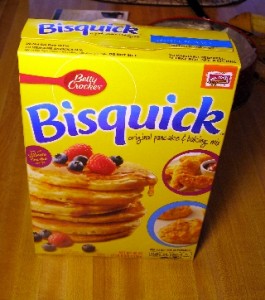
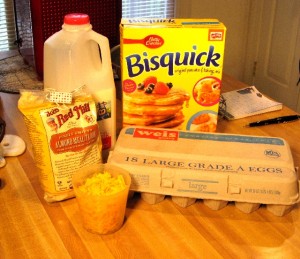
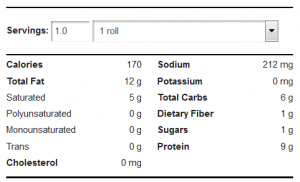
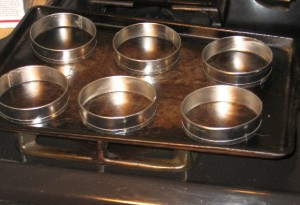
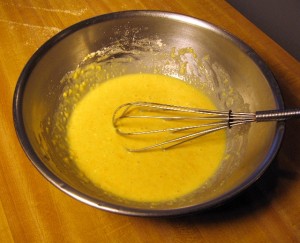
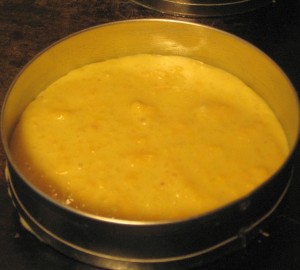
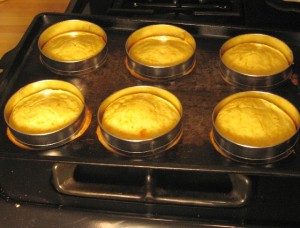
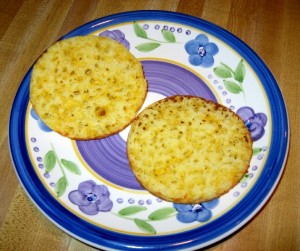
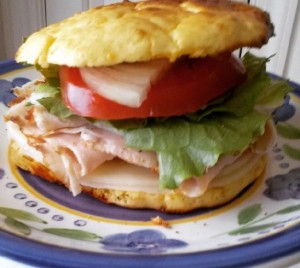
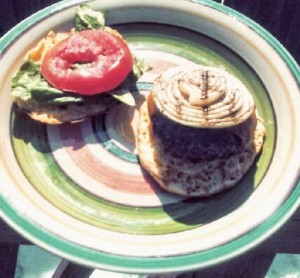
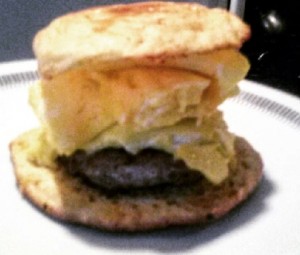
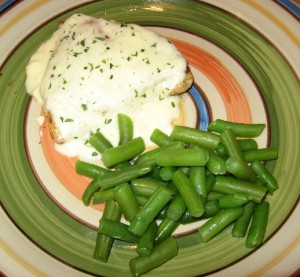 Alfredo sauce is one of those decadent delights that we’ve been conditioned to regard as extremely rich and fattening. We’ve been told that a single exposure to it will surely lead us down the path to an early death courtesy of a heart attack that we so richly deserve. At least the first part of that belief is still true (it’s extremely rich). The rest has been proven to be pure baloney.
Alfredo sauce is one of those decadent delights that we’ve been conditioned to regard as extremely rich and fattening. We’ve been told that a single exposure to it will surely lead us down the path to an early death courtesy of a heart attack that we so richly deserve. At least the first part of that belief is still true (it’s extremely rich). The rest has been proven to be pure baloney.
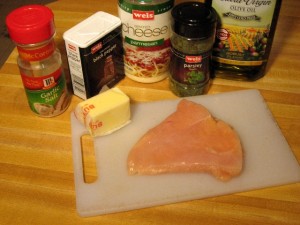
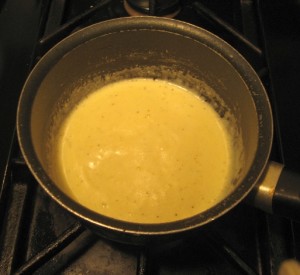
 It’s been a cold winter so far here in the Northeast, US. The other day the outdoor thermometer read a whopping 3F! And that’s without the wind chill factor. Of course, my brother Rob calls me a lightweight when I complain about the cold. He’s been seeing -14F with a wind chill of -40F out in Fargo, ND. Either way you slice it, cold is cold and cold weather and I don’t get along very well. That’s why this time of year I get nostalgic for hot cocoa.
It’s been a cold winter so far here in the Northeast, US. The other day the outdoor thermometer read a whopping 3F! And that’s without the wind chill factor. Of course, my brother Rob calls me a lightweight when I complain about the cold. He’s been seeing -14F with a wind chill of -40F out in Fargo, ND. Either way you slice it, cold is cold and cold weather and I don’t get along very well. That’s why this time of year I get nostalgic for hot cocoa.